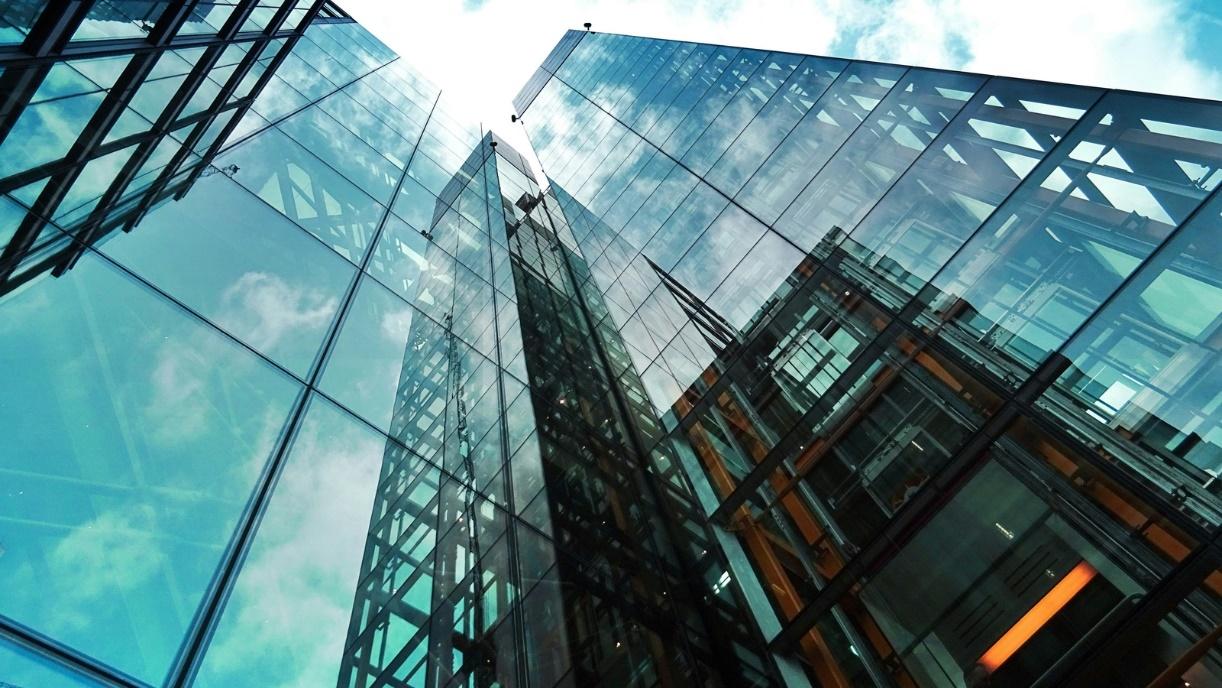Despite persistent global uncertainties — from trade tensions to IT sector layoffs — India’s office real estate market has not only stood firm but thrived in 2025. According to a recent ANAROCK report, office space absorption across the top seven cities reached an impressive 42 million sq. ft. in the first nine months of 2025, marking a 34% year-on-year surge. Even more strikingly, this is 30% higher than pre-pandemic 2019 levels, underscoring India’s continued dominance as a global workspace hub.
What’s Driving This Growth?
The demand surge is largely fueled by Global Capability Centres (GCCs) and technology-driven enterprises seeking expansion in India’s top metros. The country’s deep talent pool, cost advantages, and improved infrastructure continue to make it a preferred global destination for corporate offices.
“GCCs have become a major force, contributing to over 40% of gross leasing activity in 2025,” said Anuj Puri, Chairman of ANAROCK Group. “Cities like Bengaluru, Pune, and Chennai remain hotspots for these occupiers due to their robust infrastructure and skilled workforce.”
Also read:-₹2–3 Crore Becomes Bengaluru’s New Housing Sweet Spot: Sobha MD Shares Market Insights
City-Wise Absorption Leaders
Leading the pack is Bengaluru, clocking 9.95 million sq. ft. of office absorption — reaffirming its position as India’s tech and innovation capital.
It is followed by:
- Delhi-NCR: 8.2 million sq. ft.
- Mumbai Metropolitan Region (MMR): 6.6 million sq. ft.
These figures demonstrate strong momentum in both established and emerging business districts, especially those offering high-grade, sustainable office assets.
Also read:-Godrej Properties Expands Footprint in Bengaluru: Acquires 26-Acre Prime Land Near Sarjapur Road with ₹1,100 Crore Potential
Sector-Wise Snapshot: Who’s Leasing the Most?
The IT/ITeS sector remains the biggest occupier, commanding 27% of total leasing activity. However, coworking spaces are fast catching up, growing from 21% in 2024 to 23% in 2025. The BFSI sector accounted for 18% of total demand, driven by the expansion of domestic financial institutions and fintech firms.
This steady rise in coworking demand highlights a broader workplace shift — companies are now seeking flexible, hybrid, and cost-efficient models that blend collaboration with convenience.
Also read:-Brigade Group Seals ₹2,500 Crore Deal for Luxury Residential Project in East Bengaluru
New Office Completions Surge by 15%
The supply side also witnessed notable growth. New office completions across the top seven cities rose 15% year-on-year, from 34.07 million sq. ft. in 9M 2024 to 39.21 million sq. ft. in 9M 2025.
- Pune recorded the sharpest increase (168%), signaling a strong construction and delivery cycle.
- Bengaluru topped in terms of new supply (10.41 million sq. ft.), followed closely by Pune (9.2 million sq. ft.).
- Conversely, Hyderabad and MMR witnessed dips in project completions — 39% and 41%, respectively.
These trends underline that while the demand side remains strong, supply growth is becoming more selective and quality-oriented.
Also read:-Bengaluru Real Estate Update: OC Waiver Extended to Larger Residential Plots
Vacancy Rates Show Tightening Market
India’s office vacancy levels are showing clear signs of contraction, despite the steady infusion of new supply — a strong indicator of sustained demand.
- Chennai leads with the lowest vacancy rate at 8.9%, followed by Pune (11.3%) and Hyderabad (13.2%).
- Bengaluru reported 15.8%, while Delhi-NCR (17.6%) and MMR (18.4%) maintained moderate levels.
- Kolkata, traditionally a smaller office market, continued to have the highest vacancy at 23.5%.
Overall, India’s average vacancy rate declined to 16.2%, signaling a balanced market where fresh supply is being rapidly absorbed.
Also read:-Bengaluru Satellite Town Ring Road: New Growth Corridors Explained
What’s Next for India’s Office Market?
As corporations worldwide embrace hybrid work and sustainability-led strategies, India’s office market is evolving to meet these expectations. Developers are increasingly focusing on green buildings, LEED-certified projects, and tech-enabled campuses to attract quality tenants.
“Corporations today are seeking high-performance, flexible spaces that align with their ESG and employee well-being goals,” Puri added. “With India’s stable economy and deep talent base, the office sector will continue its upward trajectory.”
Also read:-Bengaluru’s Soaring Rentals: ₹70,000 for a 2BHK Sparks Online Outrage
Bottom Line:
India’s commercial real estate story in 2025 is one of resilience, reinvention, and robust demand. With Bengaluru leading the charge and flexible workspaces redefining the landscape, the momentum is expected to continue well into 2026.
Despite persistent global uncertainties — from trade tensions to IT sector layoffs — India’s office real estate market has not only stood firm but thrived in 2025. According to a recent ANAROCK report, office space absorption across the top seven cities reached an impressive 42 million sq. ft. in the first nine months of 2025, marking a 34% year-on-year surge. Even more strikingly, this is 30% higher than pre-pandemic 2019 levels, underscoring India’s continued dominance as a global workspace hub.
What’s Driving This Growth?
The demand surge is largely fueled by Global Capability Centres (GCCs) and technology-driven enterprises seeking expansion in India’s top metros. The country’s deep talent pool, cost advantages, and improved infrastructure continue to make it a preferred global destination for corporate offices.
“GCCs have become a major force, contributing to over 40% of gross leasing activity in 2025,” said Anuj Puri, Chairman of ANAROCK Group. “Cities like Bengaluru, Pune, and Chennai remain hotspots for these occupiers due to their robust infrastructure and skilled workforce.”
Also read:-₹2–3 Crore Becomes Bengaluru’s New Housing Sweet Spot: Sobha MD Shares Market Insights
City-Wise Absorption Leaders
Leading the pack is Bengaluru, clocking 9.95 million sq. ft. of office absorption — reaffirming its position as India’s tech and innovation capital.
It is followed by:
- Delhi-NCR: 8.2 million sq. ft.
- Mumbai Metropolitan Region (MMR): 6.6 million sq. ft.
These figures demonstrate strong momentum in both established and emerging business districts, especially those offering high-grade, sustainable office assets.
Also read:-Godrej Properties Expands Footprint in Bengaluru: Acquires 26-Acre Prime Land Near Sarjapur Road with ₹1,100 Crore Potential
Sector-Wise Snapshot: Who’s Leasing the Most?
The IT/ITeS sector remains the biggest occupier, commanding 27% of total leasing activity. However, coworking spaces are fast catching up, growing from 21% in 2024 to 23% in 2025. The BFSI sector accounted for 18% of total demand, driven by the expansion of domestic financial institutions and fintech firms.
This steady rise in coworking demand highlights a broader workplace shift — companies are now seeking flexible, hybrid, and cost-efficient models that blend collaboration with convenience.
Also read:-Brigade Group Seals ₹2,500 Crore Deal for Luxury Residential Project in East Bengaluru
New Office Completions Surge by 15%
The supply side also witnessed notable growth. New office completions across the top seven cities rose 15% year-on-year, from 34.07 million sq. ft. in 9M 2024 to 39.21 million sq. ft. in 9M 2025.
- Pune recorded the sharpest increase (168%), signaling a strong construction and delivery cycle.
- Bengaluru topped in terms of new supply (10.41 million sq. ft.), followed closely by Pune (9.2 million sq. ft.).
- Conversely, Hyderabad and MMR witnessed dips in project completions — 39% and 41%, respectively.
These trends underline that while the demand side remains strong, supply growth is becoming more selective and quality-oriented.
Also read:-Bengaluru Real Estate Update: OC Waiver Extended to Larger Residential Plots
Vacancy Rates Show Tightening Market
India’s office vacancy levels are showing clear signs of contraction, despite the steady infusion of new supply — a strong indicator of sustained demand.
- Chennai leads with the lowest vacancy rate at 8.9%, followed by Pune (11.3%) and Hyderabad (13.2%).
- Bengaluru reported 15.8%, while Delhi-NCR (17.6%) and MMR (18.4%) maintained moderate levels.
- Kolkata, traditionally a smaller office market, continued to have the highest vacancy at 23.5%.
Overall, India’s average vacancy rate declined to 16.2%, signaling a balanced market where fresh supply is being rapidly absorbed.
Also read:-Bengaluru Satellite Town Ring Road: New Growth Corridors Explained
What’s Next for India’s Office Market?
As corporations worldwide embrace hybrid work and sustainability-led strategies, India’s office market is evolving to meet these expectations. Developers are increasingly focusing on green buildings, LEED-certified projects, and tech-enabled campuses to attract quality tenants.
“Corporations today are seeking high-performance, flexible spaces that align with their ESG and employee well-being goals,” Puri added. “With India’s stable economy and deep talent base, the office sector will continue its upward trajectory.”
Also read:-Bengaluru’s Soaring Rentals: ₹70,000 for a 2BHK Sparks Online Outrage
Bottom Line:
India’s commercial real estate story in 2025 is one of resilience, reinvention, and robust demand. With Bengaluru leading the charge and flexible workspaces redefining the landscape, the momentum is expected to continue well into 2026.







